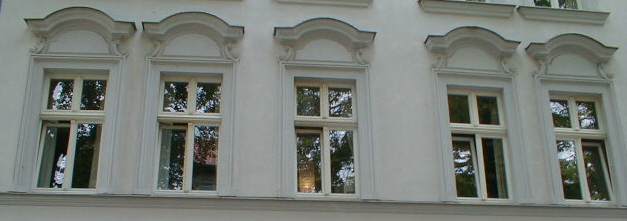BookArt
Cave walls, clay tablets, papyrus, parchment, paper... Book? Art?
Book derives from the plural form of the Germanic nomen for letter; thus, a book consists of several letters. But is that art?
Write a painting, draw a book, sculpt a novel, rephrase a statue, rhyme a sketch, brushstroke a poem: writing.
"Handwriting is jewelry fashioned by the hand from the pure gold of the intellect. It is also the brocade woven by the quill with the thread of discernment." So a collection, assemblage, of the handwriting Abu Hayyan al-Tawhidi [932-1023] here describes is then bookart, whether bound or on the walls of a building.
Though (because?) a book, for me, is first and foremost literature, that aspect of speech or language which cannot be reduced to any practical human usage, it is, often, as an object, in my treatment of it, subject to ritual and, in my consideration of it, endowed with the aura of art itself, a presence complex with the details it coaxes from the void whence all art emerges, therefore pregnant with, and requiring, the freedom vivid in the false, but inspiring, Latin etymological connection between liber and līber and thus, too, a focus of endless fetishisms.
Why else do I have more than one edition of some of my favorite works? Why else do I insist on writing my texts in a book, bound in advance, chosen quite consciously from all the many various kinds of notebooks available in our consumer world, the particular sort of ruled cahier I can only find in France, even though the hexagonal companies producing them sell all their other types in Germany as well, and writing in them with a fountain pen, preferably the single model of which I own two identical ones? Why else do I, when I get a new book, literature, open it somewhere in the middle to place my nose deep between the pages in order to smell it, recognizing a typical French, German, Italian, American, British scent (the glue? the paper?), though of course not accurately enough to perform as a trick but enough to distinguish certain publishing houses, sufficient to provide me with an intense sense of pleasure of no practical use whatsoever? Why else do I enjoy feeling the pages, holding a book, having one in my pocket? Why else do I feel more than uncomfortable being seen with one, reading one in the subway, on the tram, if I find it superficially garish, unattractive, tacky? Why else do I decide to read certain ones only at home because I find them too valuable to take out the door.
Because the book, like the text inside it, is, or can be, art. Because the sound of the writing can be echoed in the visual art of its envelope: the musical art of language frozen in visual bookart for the eye to thaw out again for the ear to hear.
But after all, if its author or translator has been dead for seventy years already, freeing his work from copyright, the work is usually available without charge online for download and printing as I choose. And I indeed have a vast number of such e-books, am exceedingly grateful that I can so easily access so much of the world's literature instantly. Yet I do not so enjoy reading them on screen or printed out at home onto standard sheets of printer paper, even if I slip them into some folder. For I realize they are, these versions, not really books. So I may print out a copy of one of Shakespeare's plays for convenient transport to read on the bus, for example, but at home I will surely take one of the heavy tomes of his complete works from the shelf. Because the ease of carrying loose pages of a text is a utilitarian expedient, these 'non-books' are transparent, draw no attention to themselves as self, as a real book does, making it art: like the work within it, not merely a window, transparent, onto something else, but art, constantly reminding me that it primarily stands for and points at itself. The book is the hand cupped around the ear of the writing so it can better hear itself when it sings for the reader.
And so I can write, as opposed to answering a letter or filling out a questionnaire or 'texting' an article, only in a notebook, already art, more than utilitarian, more than a container, already art demanding more art. (Though I do confess to drafting literary translations directly on the computer, preferably over, erasing bit by bit, the original in a computer file. Yet, as translator, I am to be transparent onto the art it is my task to render in another language. As a writer, I am opaque, including 'look at me' in every sentence, word, letter, comma I write. My translations, I hope and trust, fade before the reader's eye and focus his vision on the original behind them. Computers are utilitarian enough for that. The book is elsewhere.) When I write I want the writing noticed, not merely the content (I am writing this first in a notebook, scratching on its pages with a fountain pen, a notebook which itself draws attention to its own object-ness, purple, one which you could hold in your hands, sniff, stroke, flip the pages of, noting the physical aspect of my writing here: mistakes, fast versus slow lines, blotches, mark-outs.), just as the book, when art, proclaims its own right to, demands its own, consideration.
Perhaps it, the book, the art, contains a single letter, extravagant or simple, and therefore gives rise to the question: What is this for? Because it is art when that question arises to which the only answer is 'nothing', 'no reason'. It is, it is from, nothing and leads to nothing, which is everything, that from which existence comes.
The book, when it is art, is a flower, a rose. Must I quote Gertrude Stein? I will remind you of Stéphane Mallarmé: "Je dis: une fleur! et [...] musicalement se lève, idée même et suave, l'absente de tous bouquets." and refer you back to Angelus Silesius (289.): "Die Ros' ist ohn warumb, sie blühet weil sie blühet, / Sie achtt nicht jhrer selbst, fragt nicht ob man sie sihet." and must point you to Philippe Sollers in Drame: "Il me semble que je suis à la frontière des mots, juste avant qu'ils deviennent visibles et audibles, près d'un livre se rêvant lui-même avec une patience infinie, renvoyant à lui-même par une réflexion passive et trop riche – livre où chaque situation, y compris la plus violente, se laisserait prendre (je veux bien disparaître en lui, entouré de cette forêt, à présent)." And if I, there on the frontier of words’ audibility and visibility, want(s) to disappear in that self-dreaming book capable of encompassing each and every situation no matter how extreme, then why shouldn't the text I write(s)? And the joy (Imagine it!) when someone, I, open(s) a book, a work of art that has already enthralled me/him and find(s) another within it! Of course Leporello can litanize Don Giovanni’s exploits (There is so much sex in bookart!) only by reading them from a form of data storage (what an ugly, non-art word) which is at once visually pleasing and sensually attractive: a book – bookart.
For me, then, writer, reader, translator of literature, a book is always art inasmuch as it contains art, all the more when it is art, then, as well, even if it, the object book, is the entirety of that work of art. To stand before the real book at the Château de Chantilly of the Duc de Berry's Les très riches heures will always be much more for me than to see even the most exquisite reproductions of it. To stand in the entryway of my apartment house, or merely pass through it, and see, perhaps touch, the massive brown, reddish earth-tone, book Erich created, that sometimes dusty rough-paged book, to risk opening it, turning its thick raw paper pages heavily painted, to go downstairs and set it up on its easel again, when it has inexplicably fallen over with a thud, a book noise, in the middle of the night, is a step out of, and into, our 'world' at once – into what is behind it, comes from its same source. And then I also know how even the long red carpet in the lobby of a multiplex cinema in Berlin with the text of Billy Wilder’s One, Two, Three inscribed in, on, decorating, completing it can become a book for me, to open, to read, to enjoy the art of.
Bookart, complete it can never be, pushes on, writing the image, forming the words into an object-whole. Bookart exists when I wish to stand before the book of a work I know or don't, or with no other work inside it at all, enthralled at the prospect of touching it, opening it, disappearing into it, wandering in its artful forest.






No comments:
Post a Comment